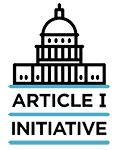Modernization of Congress Series
aThe House Select Committee on the Modernization of Congress (SCOMC) is one of the bright spots of the 116th Congress. Its deliberations have been thoughtful, substantive, and bipartisan. SCOMC’s 57 unanimous recommendations increase transparency, lend support to staff and Members, modernize the institution, and provide for continuity of operations.
Yet SCOMC is in its waning days. Regardless of whether the SCOMC is extended into the next Congress, its work must be infused into existing House institutions and processes. As its potential closing act, SCOMC (and those in the congressional capacity space) should focus on embedding this modernization work in the Committee on House Administration, the Legislative Branch Appropriations Subcommittee, and the House rules.
The House Administration Committee has been a close partner of SCOMC, with its Chair and Ranking Member serving on the SCOMC and successfully moving legislation to implement its recommendations. While not a high profile committee, the House Administration Committee was established in 1947 to modernize the House’s internal operations and streamline the committee system. One of House Admin’s two principal functions is the day-to-day operations in the House. That work has included updates to the institution’s technology since 1971. We believe SCOMC’s work could be embedded within the House Administration Committee by creating a subcommittee on modernization or, better yet, establishing a joint subcommittee with the Legislative Branch Appropriations Subcommittee.
Why Leg Branch Approps? That subcommittee has been a champion for a stronger Congress and a focus for reform for those working in the congressional capacity space. In fact, many of the major legislative reforms of the last decade have been implemented through the appropriations process, via reports requested by the subcommittee or contained in its legislative language. As appropriations bills are must-pass legislation, the Legislative Branch Appropriations Subcommittee is frequently the instigator of reforms that require the assent of the Senate and passage into law.
This year’s House Legislative Branch bill and committee report make a significant downpayment (albeit not enough, we would argue) on increased funding for the legislative branch and significant reforms to strengthen the institution. Leg Branch Approps is also critically important because any initiatives proposed by the House Administration Committee must be adequately funded to take effect. This is especially true with technology and modernization, but also applies to adequate funding for staff and institutional capacity.
Finally, SCOMC was created by an order of the House at the start of the 116th Congress as part of the rules process. At the beginning of each Congress, the House adopts a rules package that governs how it operates — and those rules do everything from establish the committees anew to creating new procedures and responsibilities. Last year alone, rule changes in the House created SCOMC, offices for the Whistleblower Ombudsman and Diversity & Inclusion, and additional ethics and procedural changes.
The majority party will control the rules in the House for the next Congress, and a change in the House rules can enable the two most powerful drivers of reform — Legislative Branch Appropriations and the Committee on House Administration — to further strengthen their collaboration with a joint subcommittee focused on reform. It also balances the strengths and weaknesses of the two committees. Leg Branch Approps is comparatively powerful, as it is responsible for money and must-pass legislation, and tends to work on a more bipartisan basis, but is subject to rapidly changing leadership. House Administration is lower profile, but often exerts day-to-day oversight over support offices and agencies.
Putting together authorizers and appropriators in this way may be the perfect mechanism to advance many of the excellent ideas from the Article I Initiative and ensure a whole-Congress perspective on how to reform the institution.
SCOMC has made significant contributions to strengthen the first branch of government in a bipartisan and productive way. Its work should be continued by embedding the modernization function explicitly shared between the House Administration Committee and the Legislative Branch Appropriations Subcommittee, and blessed by the House rules.

 Daniel Schuman
Daniel Schuman 